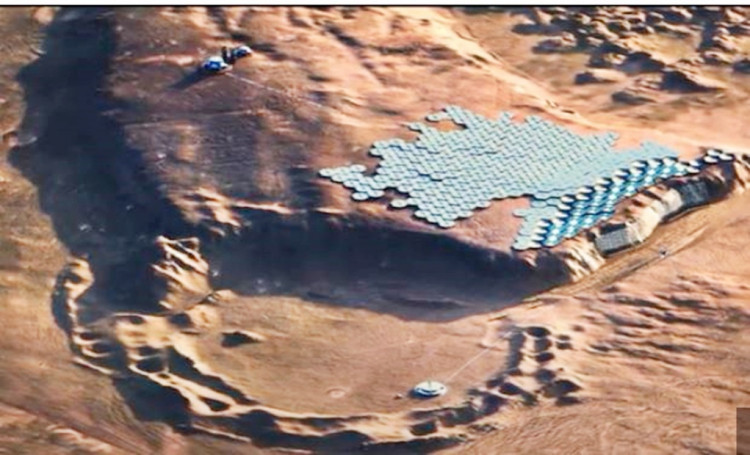A Spanish architectural studio has fleshed-out its concept for a city state of five cities on Mars, whose capital will be "Nüwa" - named after the mother goddess of Chinese mythology who created humanity to assuage her loneliness.
As envisioned by ABIBOO Studio based in Madrid, this network of cities will accommodate 1 million humans by the 22nd century. The Martian cities will be "vertical cities" built into the sides of cliffs to protect residents from deadly cosmic radiation, extreme temperature fluctuations and the low atmospheric pressure.
The Martian cities will consist of apartment blocks, workplaces and local services. They will also have public spaces and green parks. Some 4,000 people will live in each section. Energy will be generated by huge solar panel arrays.
Each block will consist of numerous interconnected cylinders extending from the illuminated exterior to about 150 meters into the rock.
Manufacturing, industrial sites, food factories, and energy production facilities will be built at the top of the cliff or at the bottom of the valley.
The precious oxygen that will allow humans to live, work and thrive on the hostile Martian surface will largely be produced by plants. Because of this, Martian colonists will have a diet that's 90% plant-based.
Scientists say there is one location on Mars ideal for the city state: a rocky Martian cliff on the southern edge of the "Tempe Mensa" region located in the Valles Marineris hemisphere.
Access to the valley below will provide natural lighting within the inhabited areas of the cities. This means colonists won't have to live completely underground.
Construction of these cities might start as early as 2054 and should be completed by 2100 when the first colonists arrive to start living there.
"We had to do a lot of analysis based on computing and working with the scientists to try to understand what are the circumstances that we will face," says ABIBOO founder Alfredo Muñoz.
He said humans "have to face challenges that are very specific to the conditions of Mars, one of them is gravity, which is only one-third of the gravity on Earth."
The Martian cities project is part of an overarching project organized by The Mars Society and developed by the SONet network, an international team of scientists and academics. ABIBOO's role is to create designs for the Martian cities based on the latest scientific research.
"The learnings that we are getting by developing a fully sustainable city on Mars brings us so much know-how and ideas and insights, about things that we could do differently on earth," said Muñoz.
He thinks building Nüwa and its four sister cities is doable from the technical aspects. He noted what will take time is ensuring convincing people from around the world to forsake the Earth and live on Mars.
In Chinese mythology, Nüwa or the Empress Wa, is the creator of all humankind. She's both the sister and wife of the hero Fuxi. Nüwa is legendary among Chinese for her role in the creation myth and for repairing the Pillars of heaven.






